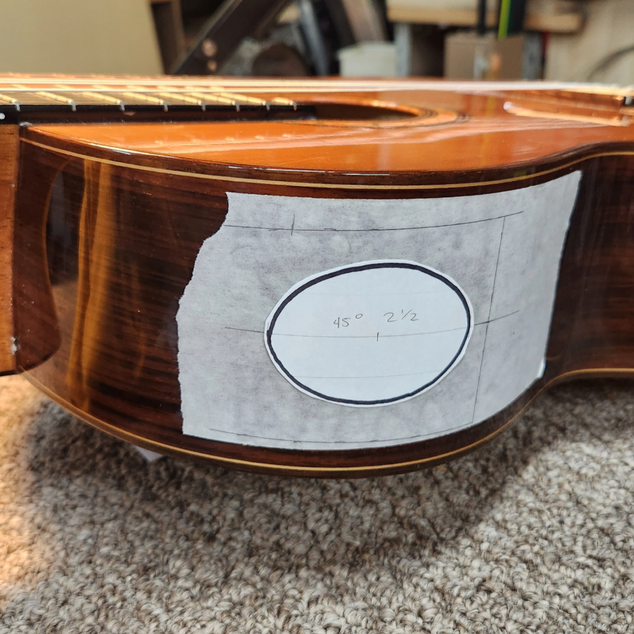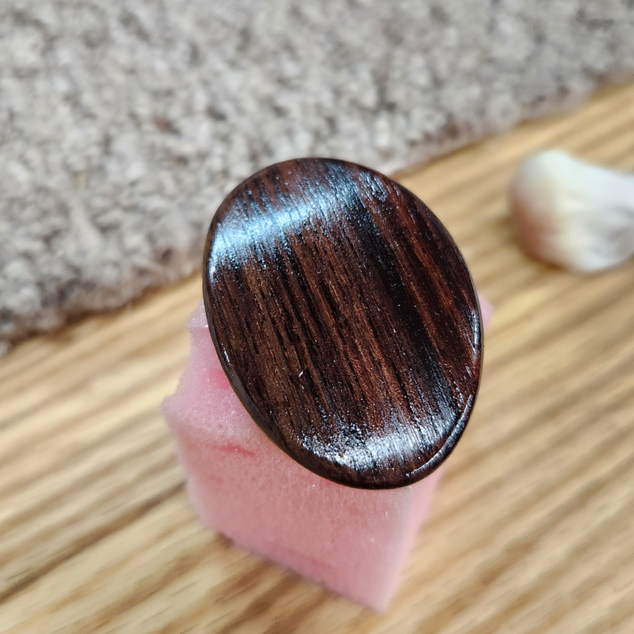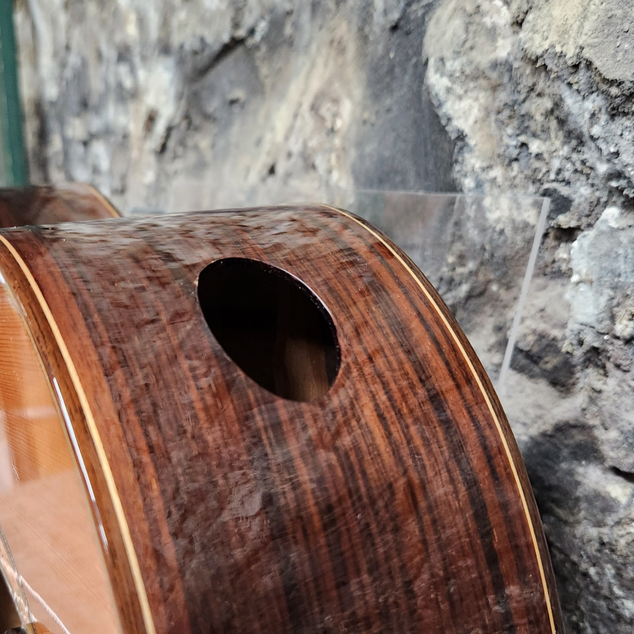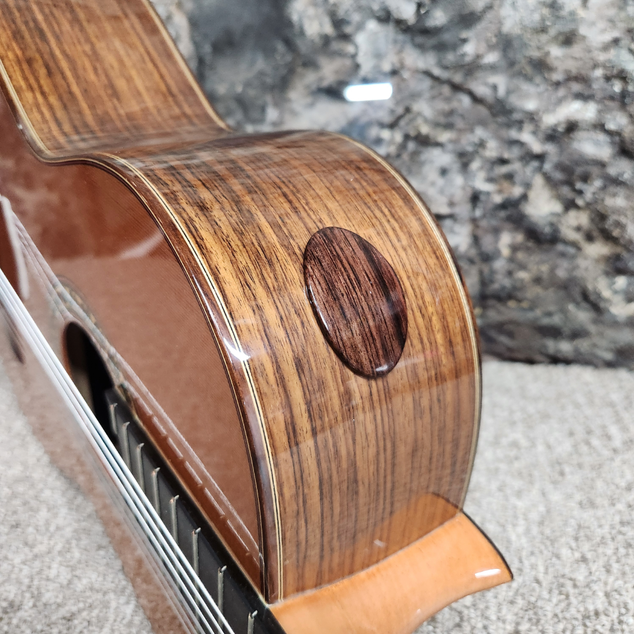Soundport Installation
Grace Da Maren
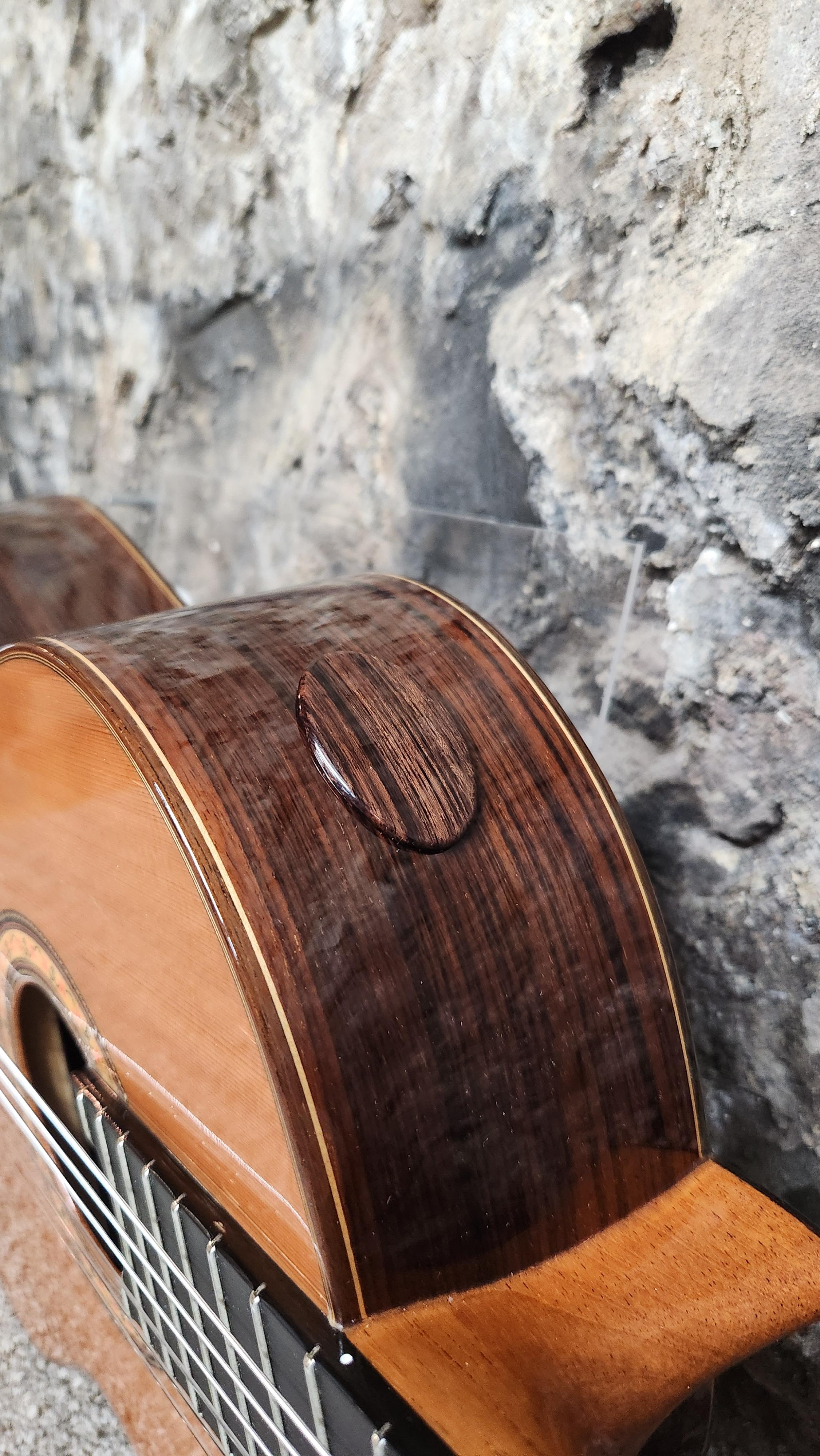
As a luthier, I have taken the hypo-harmonic-oath – Do no harm to musical instruments. But I'm also a business owner, and "the client is always right". So what do I do when the client asks me to do the unthinkable to their guitar?
I live by the hypo-harmonic oath. I am a mender of holes, a gluer of braces, a filer of nut slots. I serve my clients by mending their guitars’ wounds – to make solid what time and life have tried to dismantle. But what if a client desires a new hole in their guitar?
This was the conundrum I was in recently when a very lovely client asked me to carve a new hole in the side of his classical guitar.
What he wanted was a soundport. I know you know what a soundhole is - we’re used to seeing them on the soundboard of a guitar. The soundhole allows the sound energy to escape the guitar, for the entertainment and bewilderment of the audience sitting before the player. A soundport does the same thing – lets the sound escape the guitar – but it is placed on the upper bout of the guitar, on the side, facing up to the player. From it, the player can more clearly hear the sound they produce. It’s a cool concept, and if I could pull it off without making a mess, I would be abiding by my oath.
I practiced on one of my old junker guitars, and determined that I could do it safely and cleanly. I got some tips from my pals Beau Hannam and Zach Lefebvre. Between the two of them, I got instruction on process, cutting bits to use, and rough dimensions to aim for. I ran my idea of a soundport cap by them and got the green light. Equipped with all the knowledge and dremel bits I needed, I went for it.
I haven’t figured out a way to express this in a classy way yet, so please take this rawness gently. Sometimes I get to a point in a project where I feel like I’m at the edge of a cliff, and it's time to jump off. Sometimes it’s nearing the finish line, sometimes it’s at a middle stage, but for this job, it was right at the beginning. Standing at the edge of the cliff, I held my drilll in my hand, with the body of the guitar looking up at me. I had drawn out my cutlines, had a vacuum nearby... the next step was the leap. It’s at this precarious point when my true voice overrides the fearful voice in my head (the one listing all the ways this could go wrong). My true voice yells, “Fuck it!” and we’re off!
I drilled a hole in the centre, then dremeled the bulk of the material out. I used a sanding wheel to creep up on my lines, and I finessed the final edges of the soundport using files, then sandpaper. You’ll notice there’s a black line that’s almost like an outline of the new soundport – that’s just sharpie. To finish it, I wiped on a series of layers of CA glue.
The soudport cap came from some rosewood stock that I had kicking around. I bent it on the hot pipe and sanded it smooth. I filled the pores with shellac and pumice, then used the CA wipe-on method for a glossy, clear finish. It's got a pad of cork on the 'inside' of it that fits the soundport perfectly. This cap seals the side again when desired.
I cannot believe the colour/grain match of the cap to the sides of the guitar. I won’t have that luck again!
In fact, I didn’t! The next guitar this same client brought in for a soundport had a different shade of sides that I couldn’t quite match the cap to. But it turned out mighty well too.
But what did the client think of his new soundports?
I was constantly being asked, which Luthier worked on the instruments. I can tell you that you got compliments on your repair and raves on your covered sound ports. For now, my Ramirez 4NE is my instrument and I love it. It plays beautifully. You really knocked it out of the park... I think I'll probably keep that guitar no matter what... as it now has some sentimental value.
This soundport project was really a wonderful experience. I am so very happy to have had a client with such a clear vision and trust in my abilities.
I'd do more soundports! If you want one, let me know! And if your guitar accidently acquires a soundport, let me know - I'd love to fix that for you too.
October 2024
